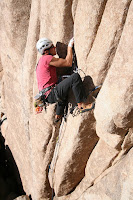One of the greatest experiments students can do to celebrate pi day is measuring the circumference of a circle and dividing by the measured diameter to approximate pi. This is a cool exercise not only because it is an engaging experiment, but also because it gets students to think about and observe an essential characteristic of circles, namely that every circle is similar to every other, and C/d is a constant. They might even start to wonder, why is it that pi is approximately 3.14 and not some other value? This is a wonderful mystery that made me think: Is there a way to make pi something else?
Well, let’s first review where pi comes from. Imagine you
get a puppy and name him Pie-Dough. Because Fido was already taken. You’ve got
a nice big yard for him to play in, but he’s always getting into things he
shouldn’t, so sometimes you put him on a 20 meter leash that is tied to a tree in
the middle of the yard. Of course, he is always running around at the end of
the leash. Here’s what that looks like:
Of course, Pie-Dough is happily running in a circle. The
circumference of that circle divided by the radius (the leash) is 2pi. No
surprises there. But things are about to get pretty fantastic. Imagine that you
move to the North Pole, and you put Pie-Dough on a super lightweight leash
that is, get this, 500 kilometers long! And Pie-Dough has crazy puppy energy,
and still runs in a circle at the end of the leash. But I have a question for
you: Is the leash pulled straight? Check out the image below, with the leash in
blue and the path of Pie-Dough as a black circle:
Because the leash is so long, Pie-Dough’s leash is actually
curved along the surface of the earth! He actually doesn’t get to run in as big
of a circle as he could if the leash were straight. Can you see why? So now, if
you divide the circumference of his circle by the leash length, will you still
get 2pi?
Nope, you won’t. Because his “radius” is curved. The
Circumference divided by the “radius” will be less than 2pi. This is even
clearer in the diagram below, where Pie-Dough’s leash extends all the way to
the equator (he can swim oceans, no problem). Can you figure out C/r in this
case?
So you might be thinking, well yeah, the ratio is different
because I’ve distorted the “radius.” That’s true. But another way to think
about it is that I’ve changed the space we are working in from a flat surface
to a curved surface. We stopped looking at the world from Euclid’s perspective,
where the ratio C/r = 2pi, to a non-Euclidean perspective, where C/r < 2pi. Our
universe changed from a flat plane to the surface of a sphere! In fact, the actual universe on large scales is curved, so there is good reason to look at it from a non-Euclidean perspective. The universe can be curved like the spheres we saw above, or it can be
curved in such a way that C/r > 2pi. What does that look
like?
So in the diagram above, imagine Pie-Dough’s yard is the
funky red saddle shape. The sphere there is just to roughly show you Pie-Dough’s
possible paths, if he could fly off the red saddle. But let’s say he can’t fly
off the surface and he just runs around on the curved path where the blue
sphere and the red saddle intersect. The points A and B show some examples of
where Pie-Dough could be, with the leash shown as a dotted line from the
center. Actually the leash should also be curving, stuck on the saddle, but this was the best approximation I could make using Geogebra. If you know of a better visualization let me know!
As you can see, Pie-Dough can run quite a distance along
that topsy-turvy path, a lot more than he could when he was stuck on a flat
surface. In this case, because the universe he’s running in is curved like this
saddle, the “circumference” is huge compared to the “radius,” giving us a ratio
of C/r > 2pi.
So there are two things I think are cool about this. First
off, at large scales, the actual universe can be curved as shown above.
Secondly, if you have a baseball, you can explain to someone how the
circumference divided by the radius can be less than or greater than 2pi! It's all about thinking of it from the perspective of Pie-Dough--when he runs on his path in his curved universe, for him, the yard is flat, the radius is straight, and the path is a circle. But we know that because his universe is actually curved, the geometry get's weird, specifically, it gets non-Euclidean. Pie-Dough, we're not in Kansas anymore!
Oh, by the way, here’s another way to approximate pi quite
accurately. It’s a freebie so check it out!
Finally, check out these other great Pi-Day posts by
inspiring teachers! Happy 3.14!














